Most hospitals in the U.A.E house an all-inclusive ankle and foot clinic and are well equipped to deal with most of the injuries and disorders of the lower limbs of the human body. Hospitals in U.A.E offer intensive treatments coupled with private clinical and medical care, followed by therapy programs that highlight the international medical standards to ensure that patients recover quicker. In order to accommodate all UAE nationals who are vying for an ankle fusion surgery, they have accommodated their hospitals with the necessary medical equipment and medical machines that are used to operate on ankle and foot injuries of varying degrees. Most dedicated foot and ankle surgeons have access to the best in technology in terms of medicine, treatment, and support. From incapacitating ailments to sports and activity related injuries, the hospitals in UAE have the expertise, the experience and the equipment to provide the best treatment possible.
The UAE also boasts about another achievement in the field of medicine. Because of their position as being the leader in advanced medical science, they have hosted the first Total Ankle Arthroplasty (TAA) also known as Ankle Replacement Surgery. The surgery was conducted by
| Country | Cost | Local_currency |
|---|---|---|
| Czechia | USD 5240 | Czechia 118896 |
| Greece | USD 7000 | Greece 6440 |
| Hungary | USD 5000 | Hungary 1742800 |
| India | USD 4010 | India 333432 |
| Israel | USD 20000 | Israel 76000 |
| Lithuania | USD 3090 | Lithuania 2843 |
| South Korea | USD 12000 | South Korea 16112280 |
| Spain | USD 22000 | Spain 20240 |
| Tunisia | USD 3900 | Tunisia 12129 |
| Turkey | USD 7020 | Turkey 211583 |
| United Kingdom | USD 6230 | United Kingdom 4922 |
Treatment cost
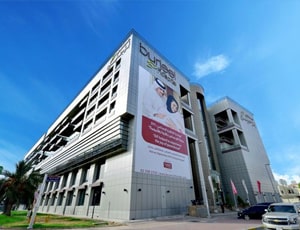
Types of Ankle Fusion Surgery in Burjeel Hospital, Abu Dhabi and its associated cost
| Treatment Option | Approximate Cost Range (USD) | Approximate Cost Range (AED) |
|---|---|---|
| Ankle Fusion Surgery (Overall) | 7164 - 21648 | 26823 - 81130 |
| Ankle Arthrodesis | 7193 - 12937 | 27264 - 47140 |
| Open Ankle Fusion Surgery | 11100 - 17447 | 40556 - 64205 |
| Arthroscopic Ankle Fusion | 12960 - 20007 | 48575 - 72608 |
| Minimally Invasive Ankle Fusion | 15340 - 21890 | 57217 - 80663 |
| External Fixation Ankle Fusion | 17408 - 21678 | 63955 - 78754 |
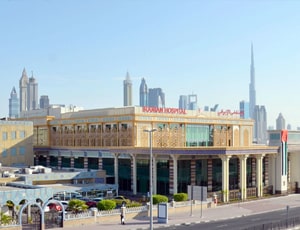
Types of Ankle Fusion Surgery in Iranian Hospital and its associated cost
| Treatment Option | Approximate Cost Range (USD) | Approximate Cost Range (AED) |
|---|---|---|
| Ankle Fusion Surgery (Overall) | 7173 - 22065 | 26891 - 81018 |
| Ankle Arthrodesis | 7289 - 13260 | 27332 - 48035 |
| Open Ankle Fusion Surgery | 10854 - 17727 | 40341 - 63462 |
| Arthroscopic Ankle Fusion | 13003 - 19452 | 48273 - 72481 |
| Minimally Invasive Ankle Fusion | 15045 - 21860 | 56150 - 80426 |
| External Fixation Ankle Fusion | 17767 - 21474 | 64899 - 80253 |
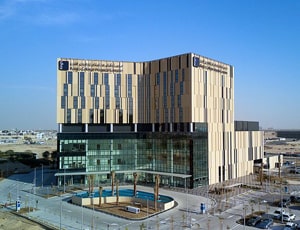
Types of Ankle Fusion Surgery in Kings College Hospital Dubai and its associated cost
| Treatment Option | Approximate Cost Range (USD) | Approximate Cost Range (AED) |
|---|---|---|
| Ankle Fusion Surgery (Overall) | 7394 - 21655 | 26614 - 80223 |
| Ankle Arthrodesis | 7427 - 13320 | 26850 - 48181 |
| Open Ankle Fusion Surgery | 10694 - 17443 | 40886 - 65348 |
| Arthroscopic Ankle Fusion | 13294 - 19986 | 48023 - 73358 |
| Minimally Invasive Ankle Fusion | 15305 - 21861 | 56276 - 81308 |
| External Fixation Ankle Fusion | 17310 - 22344 | 64820 - 80279 |

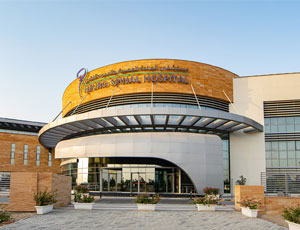
The Neuro Spinal Hospital is located in Dubai Science Park in Dubai. It is a pioneer in bringing the latest Technology, Medicine, and Education to heal and serve the community. It has been approved and accredited by the Dubai Health Authority and has the Government of Dubai and Dubai Health Experience as its partners.
It has a 114-bed capacity, green spaces for the rehabilitation of the patients, and smart patient rooms, and is four times that of its former premises in terms of capacity. It is also the first hospital to have surgical robots in UAE. The Continous Medical Education (CME) program was introduced in 2007 by the hospital that has become a mandatory requirement for all healthcare professionals. Practitioners need to provide that they have attended enough CME hours to be promoted to a higher level or renew their licenses.
The hospital consists of multinational staff who are dedicated to working together for solving problems with the patients and their families, to provide the highest level of support and care through advanced and progressive technologies, and an evidence approach to medicine, all delivered in a collaborative and compassionate environment. The team believes in safety, quality, dignity, engagement, and collaboration in providing premium healthcare to the patient. It consists of specialized units such as spinal and back pain units, joint replacement centers, sports medicine, orthopedics, oncology, neurology, physiotherapy, etc.
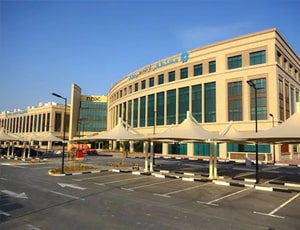
Types of Ankle Fusion Surgery in NMC Royal Hospital, Khalifa City and its associated cost
| Treatment Option | Approximate Cost Range (USD) | Approximate Cost Range (AED) |
|---|---|---|
| Ankle Fusion Surgery (Overall) | 7321 - 22165 | 26196 - 78636 |
| Ankle Arthrodesis | 7414 - 12840 | 27002 - 48150 |
| Open Ankle Fusion Surgery | 10853 - 17216 | 39296 - 63696 |
| Arthroscopic Ankle Fusion | 13339 - 19883 | 47613 - 71863 |
| Minimally Invasive Ankle Fusion | 15082 - 22311 | 55831 - 81055 |
| External Fixation Ankle Fusion | 17208 - 21769 | 65338 - 78992 |
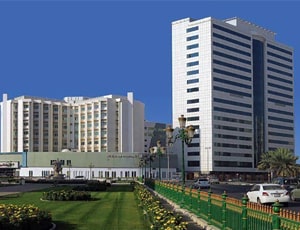
Types of Ankle Fusion Surgery in NMC Royal Hospital Sharjah and its associated cost
| Treatment Option | Approximate Cost Range (USD) | Approximate Cost Range (AED) |
|---|---|---|
| Ankle Fusion Surgery (Overall) | 7358 - 21755 | 27045 - 80805 |
| Ankle Arthrodesis | 7199 - 13380 | 26762 - 47651 |
| Open Ankle Fusion Surgery | 10996 - 17770 | 40513 - 62915 |
| Arthroscopic Ankle Fusion | 13227 - 19829 | 47896 - 72556 |
| Minimally Invasive Ankle Fusion | 15502 - 22143 | 56059 - 81552 |
| External Fixation Ankle Fusion | 17158 - 21919 | 64195 - 78570 |
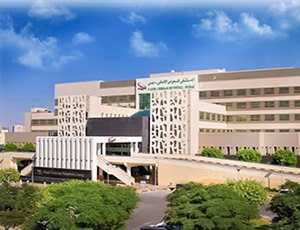
Types of Ankle Fusion Surgery in Saudi German Hospital and its associated cost
| Treatment Option | Approximate Cost Range (USD) | Approximate Cost Range (AED) |
|---|---|---|
| Ankle Fusion Surgery (Overall) | 7160 - 21580 | 26216 - 79802 |
| Ankle Arthrodesis | 7360 - 13154 | 27041 - 47381 |
| Open Ankle Fusion Surgery | 11095 - 17421 | 40004 - 64702 |
| Arthroscopic Ankle Fusion | 13037 - 19654 | 48280 - 70663 |
| Minimally Invasive Ankle Fusion | 15126 - 22047 | 55296 - 81256 |
| External Fixation Ankle Fusion | 17304 - 21811 | 62821 - 79878 |
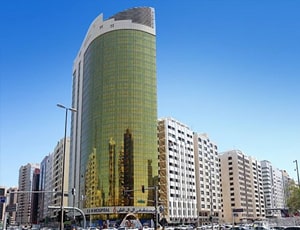
Types of Ankle Fusion Surgery in LLH Hospital, Abu Dhabi and its associated cost
| Treatment Option | Approximate Cost Range (USD) | Approximate Cost Range (AED) |
|---|---|---|
| Ankle Fusion Surgery (Overall) | 7319 - 21920 | 26846 - 81522 |
| Ankle Arthrodesis | 7207 - 13113 | 27317 - 48798 |
| Open Ankle Fusion Surgery | 10979 - 17152 | 40197 - 64710 |
| Arthroscopic Ankle Fusion | 12937 - 20080 | 47882 - 73004 |
| Minimally Invasive Ankle Fusion | 15551 - 21402 | 55579 - 79084 |
| External Fixation Ankle Fusion | 17191 - 21899 | 64731 - 81574 |
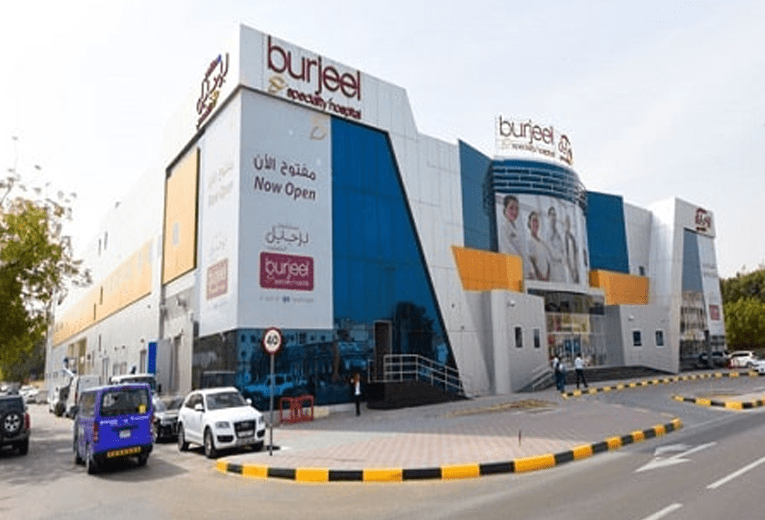
Types of Ankle Fusion Surgery in Burjeel Specialty Hospital, Sharjah and its associated cost
| Treatment Option | Approximate Cost Range (USD) | Approximate Cost Range (AED) |
|---|---|---|
| Ankle Fusion Surgery (Overall) | 7412 - 21817 | 27245 - 81841 |
| Ankle Arthrodesis | 7139 - 13273 | 26244 - 48002 |
| Open Ankle Fusion Surgery | 10762 - 17139 | 39673 - 65142 |
| Arthroscopic Ankle Fusion | 12982 - 19679 | 47511 - 71147 |
| Minimally Invasive Ankle Fusion | 15059 - 21804 | 57144 - 80585 |
| External Fixation Ankle Fusion | 17266 - 21953 | 64382 - 80359 |

Types of Ankle Fusion Surgery in Zulekha Hospital Sharjah and its associated cost
| Treatment Option | Approximate Cost Range (USD) | Approximate Cost Range (AED) |
|---|---|---|
| Ankle Fusion Surgery (Overall) | 7131 - 22006 | 26315 - 78846 |
| Ankle Arthrodesis | 7308 - 13117 | 26165 - 48387 |
| Open Ankle Fusion Surgery | 10957 - 17308 | 39711 - 63427 |
| Arthroscopic Ankle Fusion | 13171 - 20023 | 48046 - 72416 |
| Minimally Invasive Ankle Fusion | 15438 - 22025 | 56744 - 79896 |
| External Fixation Ankle Fusion | 17624 - 21740 | 64792 - 81517 |

Types of Ankle Fusion Surgery in Zulekha Hospital Dubai and its associated cost
| Treatment Option | Approximate Cost Range (USD) | Approximate Cost Range (AED) |
|---|---|---|
| Ankle Fusion Surgery (Overall) | 7142 - 22282 | 26810 - 81682 |
| Ankle Arthrodesis | 7430 - 13050 | 26355 - 47769 |
| Open Ankle Fusion Surgery | 10914 - 17808 | 40343 - 64870 |
| Arthroscopic Ankle Fusion | 13045 - 20057 | 47365 - 71708 |
| Minimally Invasive Ankle Fusion | 15045 - 22351 | 55606 - 81825 |
| External Fixation Ankle Fusion | 17138 - 21605 | 64092 - 79971 |
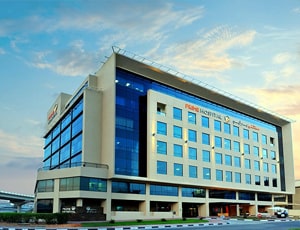
Types of Ankle Fusion Surgery in Prime Hospital and its associated cost
| Treatment Option | Approximate Cost Range (USD) | Approximate Cost Range (AED) |
|---|---|---|
| Ankle Fusion Surgery (Overall) | 7341 - 21711 | 26812 - 80419 |
| Ankle Arthrodesis | 7353 - 13002 | 26301 - 47998 |
| Open Ankle Fusion Surgery | 11096 - 17144 | 40909 - 65480 |
| Arthroscopic Ankle Fusion | 13381 - 19866 | 48312 - 72624 |
| Minimally Invasive Ankle Fusion | 15454 - 21892 | 56099 - 80300 |
| External Fixation Ankle Fusion | 17788 - 22140 | 63238 - 81993 |
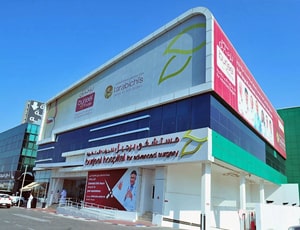
Types of Ankle Fusion Surgery in Burjeel Hospital for Advanced Surgery Dubai and its associated cost
| Treatment Option | Approximate Cost Range (USD) | Approximate Cost Range (AED) |
|---|---|---|
| Ankle Fusion Surgery (Overall) | 7160 - 21402 | 27004 - 80532 |
| Ankle Arthrodesis | 7303 - 12932 | 26973 - 48125 |
| Open Ankle Fusion Surgery | 11068 - 17524 | 39945 - 63470 |
| Arthroscopic Ankle Fusion | 12870 - 20089 | 48231 - 73683 |
| Minimally Invasive Ankle Fusion | 15420 - 22104 | 56503 - 81556 |
| External Fixation Ankle Fusion | 17403 - 21393 | 63003 - 81004 |
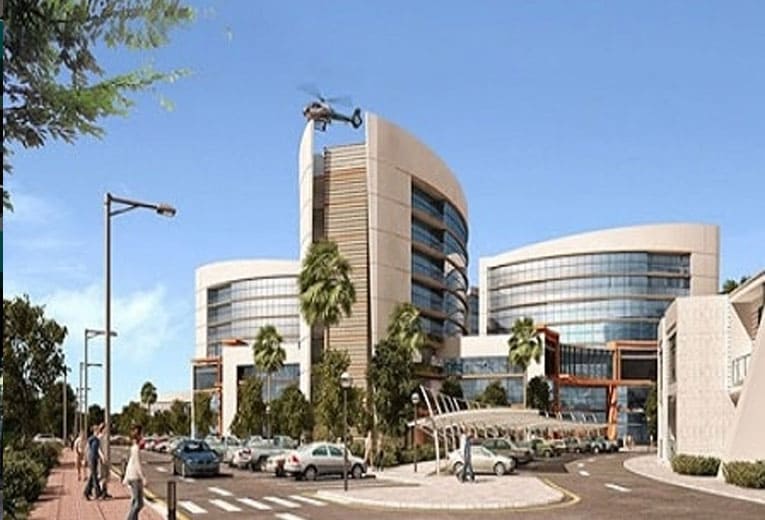
Types of Ankle Fusion Surgery in Burjeel Medical City and its associated cost
| Treatment Option | Approximate Cost Range (USD) | Approximate Cost Range (AED) |
|---|---|---|
| Ankle Fusion Surgery (Overall) | 7310 - 22104 | 26810 - 80146 |
| Ankle Arthrodesis | 7405 - 13125 | 27063 - 47538 |
| Open Ankle Fusion Surgery | 11156 - 17304 | 39552 - 63016 |
| Arthroscopic Ankle Fusion | 12838 - 19998 | 49050 - 72302 |
| Minimally Invasive Ankle Fusion | 15634 - 22264 | 56295 - 80999 |
| External Fixation Ankle Fusion | 17657 - 21989 | 62839 - 79927 |

Types of Ankle Fusion Surgery in Aster DM Healthcare and its associated cost
| Treatment Option | Approximate Cost Range (USD) | Approximate Cost Range (AED) |
|---|---|---|
| Ankle Fusion Surgery (Overall) | 7349 - 22041 | 26444 - 80387 |
| Ankle Arthrodesis | 7395 - 13270 | 26727 - 48684 |
| Open Ankle Fusion Surgery | 11000 - 17674 | 40810 - 62819 |
| Arthroscopic Ankle Fusion | 13297 - 19376 | 48285 - 71207 |
| Minimally Invasive Ankle Fusion | 15299 - 21875 | 55346 - 78554 |
| External Fixation Ankle Fusion | 17380 - 21630 | 63550 - 80274 |
Ankle fusion operation, also known as ankle arthrodesis, is a surgical procedure conducted to close the joint space by joining the bones that make up the ankle joint.
Your ankle joint is an articulation of three bones. These three bones are known as the tibia, fibula, and the talus. During ankle fusion operation, the cartilage covering the bony surface of the ankle joint is scraped off. The diseased part of the bones is also trimmed.
Next, the newly exposed bony surface of the tibia and the talus are placed in close contact. Additionally, they are compressed using screws. New bone formation takes place in and around the joint resulting infusion of the bones into a single bone.
Ankle fusion operation is recommended for patients experiencing unbearable pain during ankle movement. The pain may result because of the following reasons:
Not all patients with the aforementioned conditions are always suitable for ankle fusion. Patients with the following characteristics are not suggested to undergo this surgery:
During the surgery, you are given either local anaesthesia or sedation to numb the entire ankle area. The doctor makes a small cut on the lateral side of the ankle through the skin so that the joint can be seen clearly. If more visibility is needed, the doctor makes an extra cut in the front of the ankle.
The doctor then uses a saw to remove the articular cartilage on the surface of the joint bones. The diseased bone is removed, exposing the healthy part of the bone. The healthy bone surfaces are compressed using large screws. The bones join naturally through deposition of bone material as is the case with natural fracture healing.
Sometimes, a doctor may place an artificial bone graft or a bone grafted from your fibula to ensure fast healing of the bony surfaces. Before placing the screws, the doctor carefully positions the ankle to ensure maximum movement possible. The ankle is placed at 90 degrees to the lower leg and the heel is slightly outwards. Then the skin is brought back in place and sutured together.
Ankle fusion recovery time depends on how seriously you take the following precautions after the surgery:
Arthroscopic ankle fusion surgery: This procedure is similar to the open ankle fusion surgery. However, the incision is very small and the entire procedure is carried out by inserting an instrument that has a camera attached to one end. It helps the doctor clearly view the interior cartilage and bones. Faster recovery and healing are the two advantages of this approach.
Ankle joint replacement: During this procedure, the entire ankle joint is replaced. The advantage of this technique over ankle fusion is that it retains complete movement of the ankle.
Ask your healthcare adviser for the best multiple options and choose the one that meets your expectations
Different hospitals have different pricing policy when it comes to the cost of Ankle Fusion Surgery in the United Arab Emirates. There are many hospital that cover the cost of pre-surgical investigations of the patient in the treatment package. The comprehensive Ankle Fusion Surgery package cost includes the cost of investigations, surgery, medicines and consumables. There are many things that may increase the cost of Ankle Fusion Surgery in the United Arab Emirates, including prolonged hospital stay and complications after the procedure.
Many hospitals in the United Arab Emirates perform Ankle Fusion Surgery. The following are some of the most renowned hospitals for Ankle Fusion Surgery in the United Arab Emirates:
After Ankle Fusion Surgery in the United Arab Emirates, the patient is supposed to stay in guest house for another 15 days. This period is important to conduct all the follow-up tests to ensure that the surgery was successful and the patient can go back to the home country.
There are certain additional cost that the patient has to pay apart from the Ankle Fusion Surgery cost. The extra charges may start from USD 50 per person.
Ankle Fusion Surgery in the United Arab Emirates is offered in almost all metropolitan cities, including the following:
It is possible for patients to opt for video telemedicine consultation before they come for Ankle Fusion Surgery in the United Arab Emirates. Some of the surgeons offering this service include the following
| Doctor | Cost | Schedule Your Appointment |
|---|---|---|
| Dr. Mohammed Monkez Alwani | USD 173 | Schedule Now |
| Dr. Ravi Nayak | USD 173 | Schedule Now |
After Ankle Fusion Surgery, the patient is supposed to stay for about 3 days in the hospital for recovery and monitoring. The doctors team review the patient's recovery during this time with the help of blood tests and imaging scans. Once they feel that everything is on track, the patient is discharged.
The average rating for Ankle Fusion Surgery hospitals in the United Arab Emirates is 4.5. This rating is automatically calculated on the basis of several parameters such as the infrastructure of the hospital, quality of services, nursing support and other services.
There are more than 24 hospitals that offer Ankle Fusion Surgery in the United Arab Emirates. These hospitals have propoer infrastructure as well as offer good quality of services when it comes to Ankle Fusion Surgery Also, these hospitals follow the necessary guidelines as required by the medical associations for the treatment of Ankle Fusion Surgery patients.
Some of the renowned doctors for Ankle Fusion Surgery in the United Arab Emirates are: